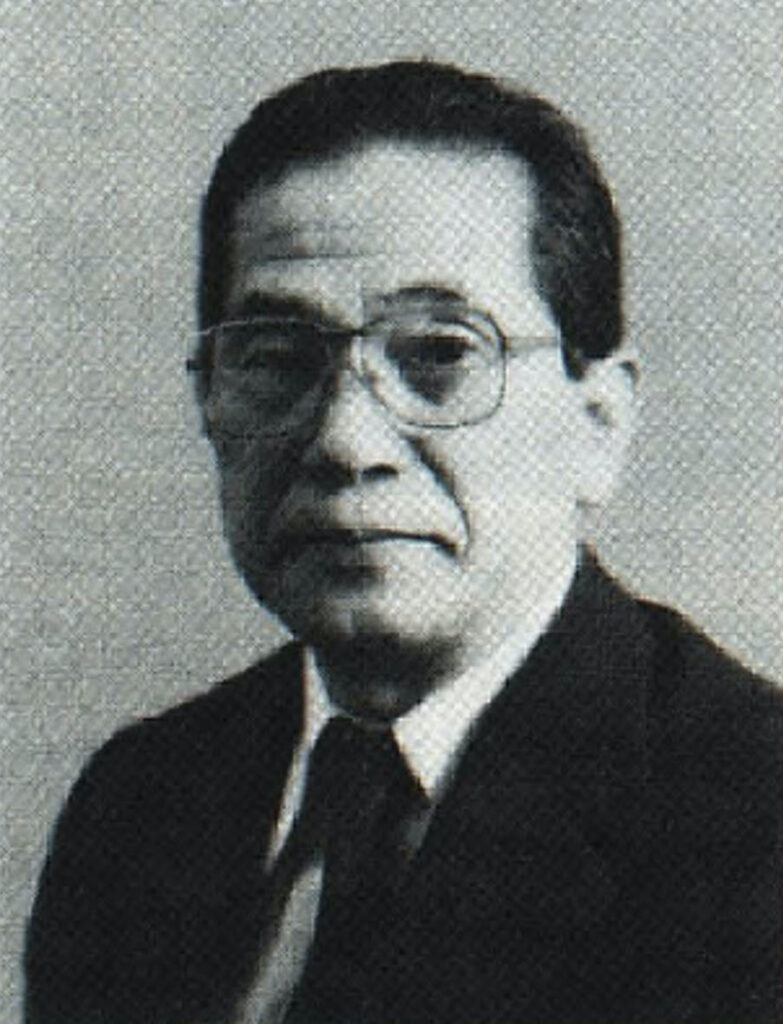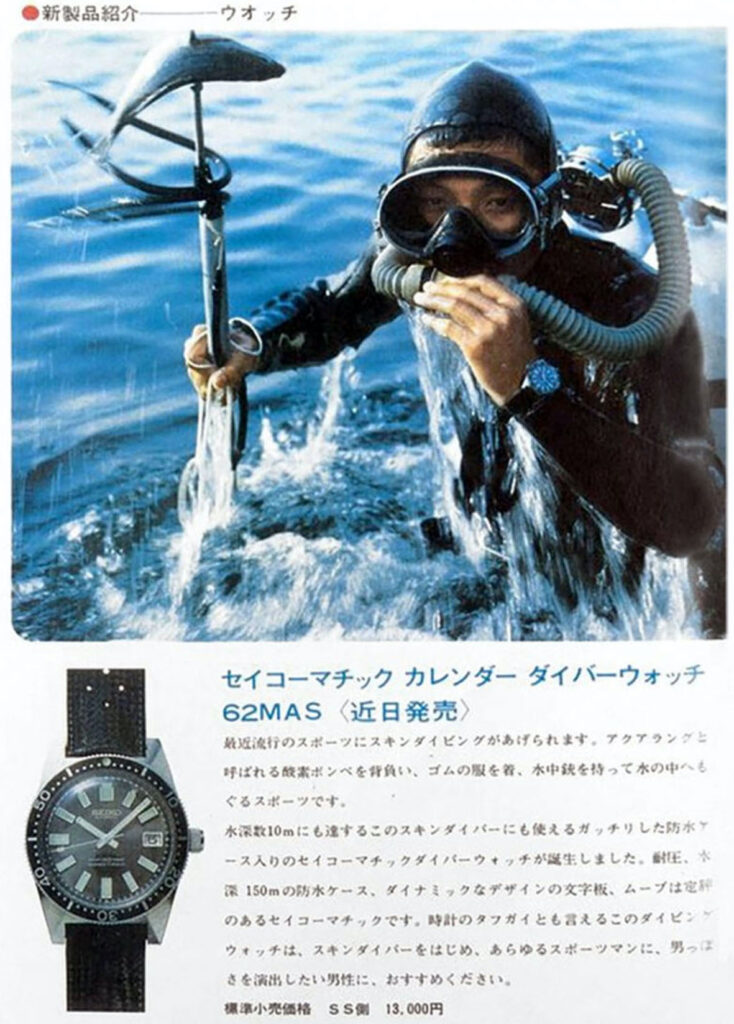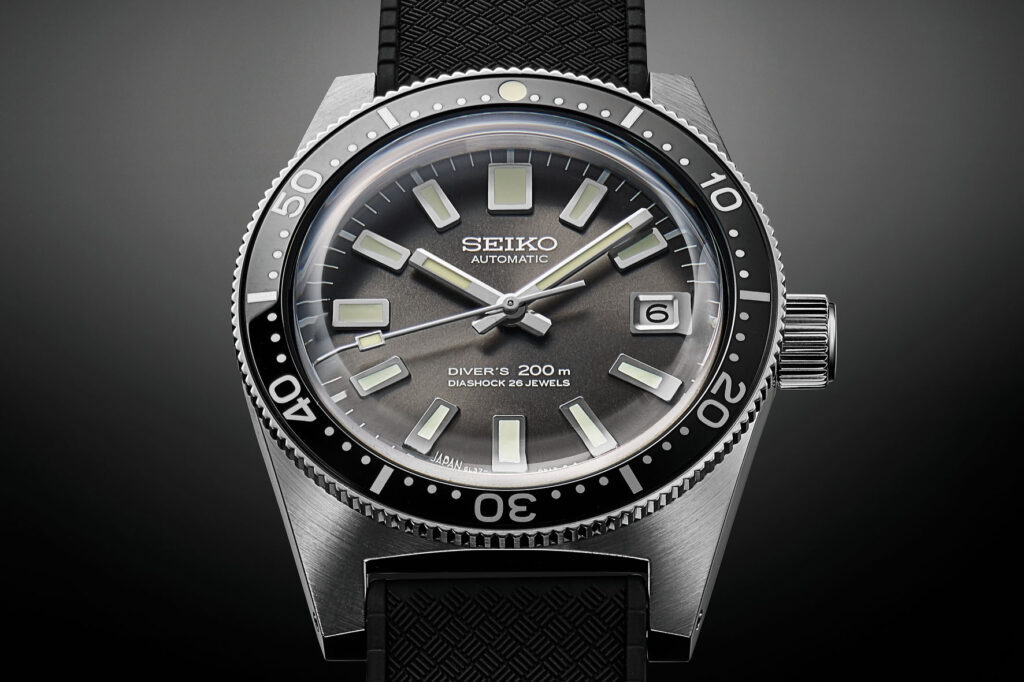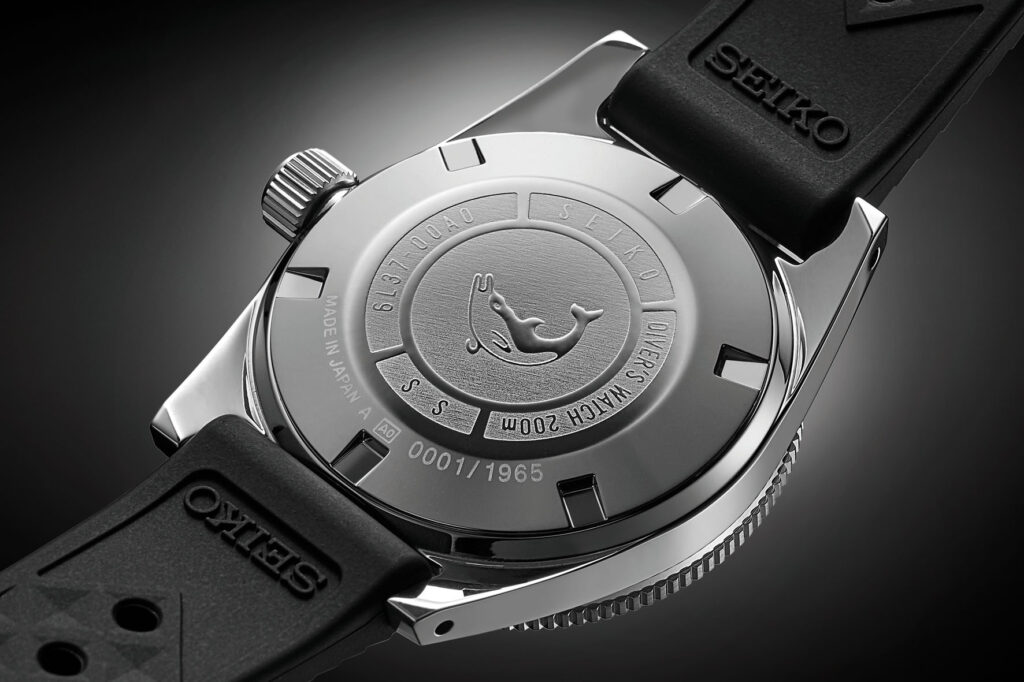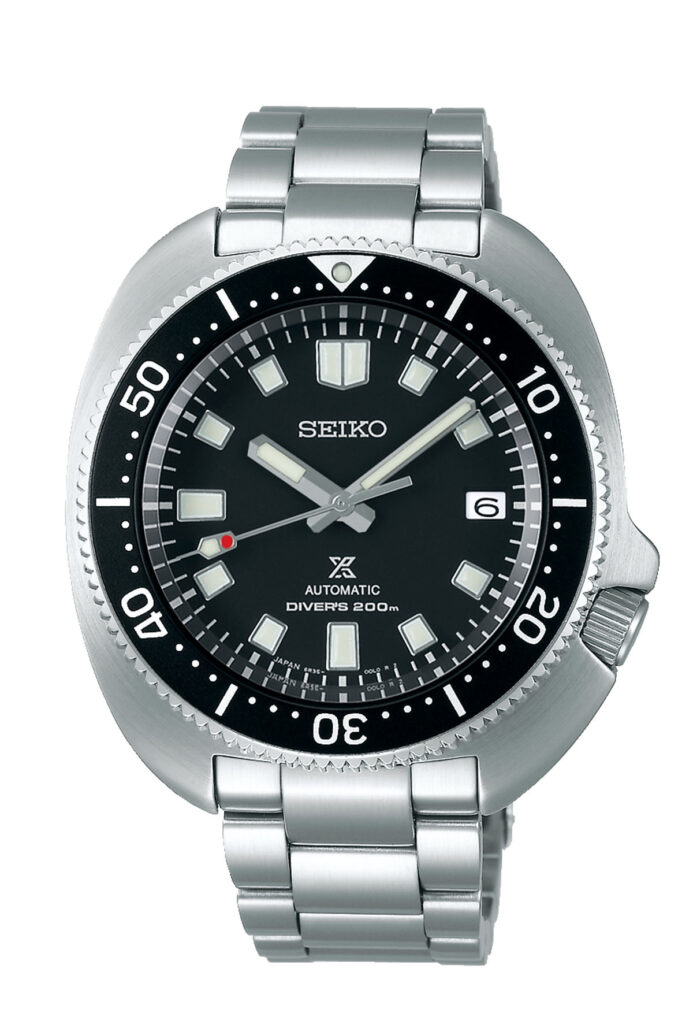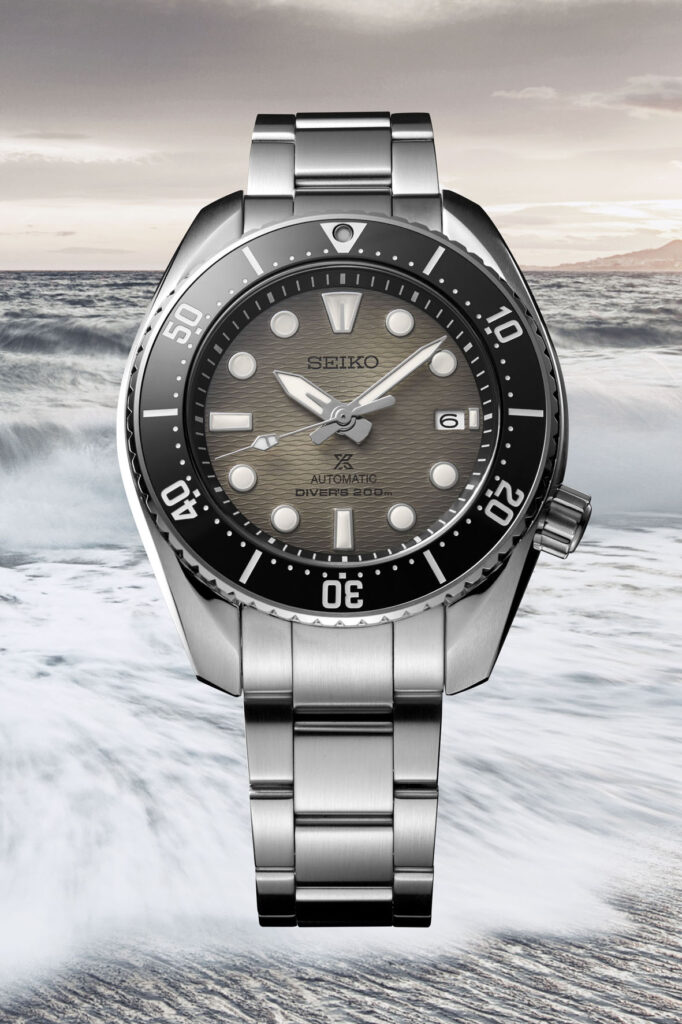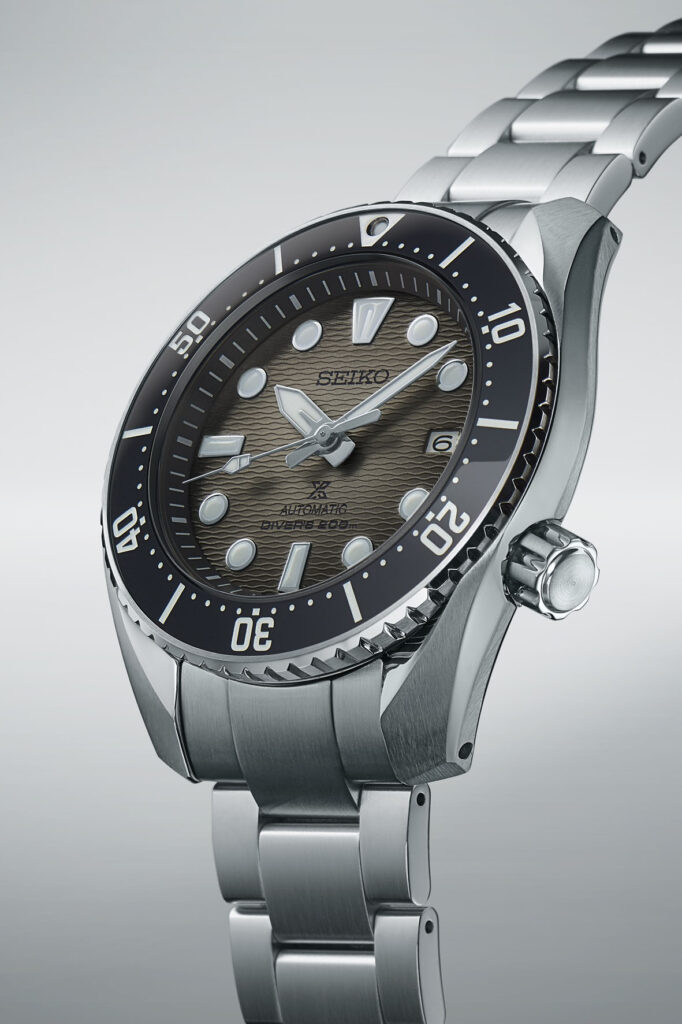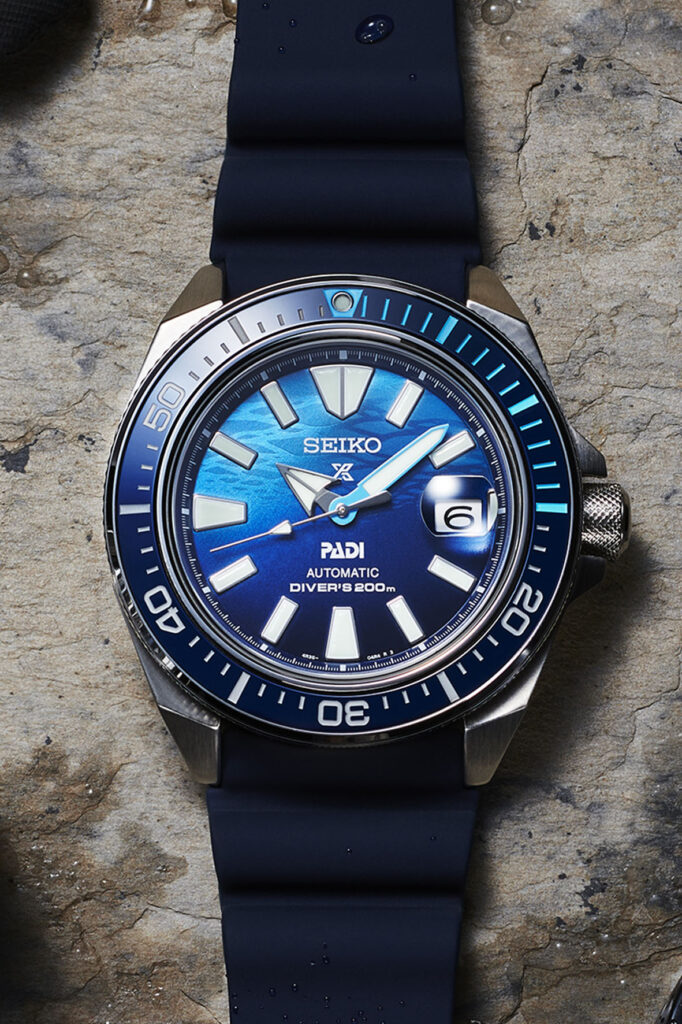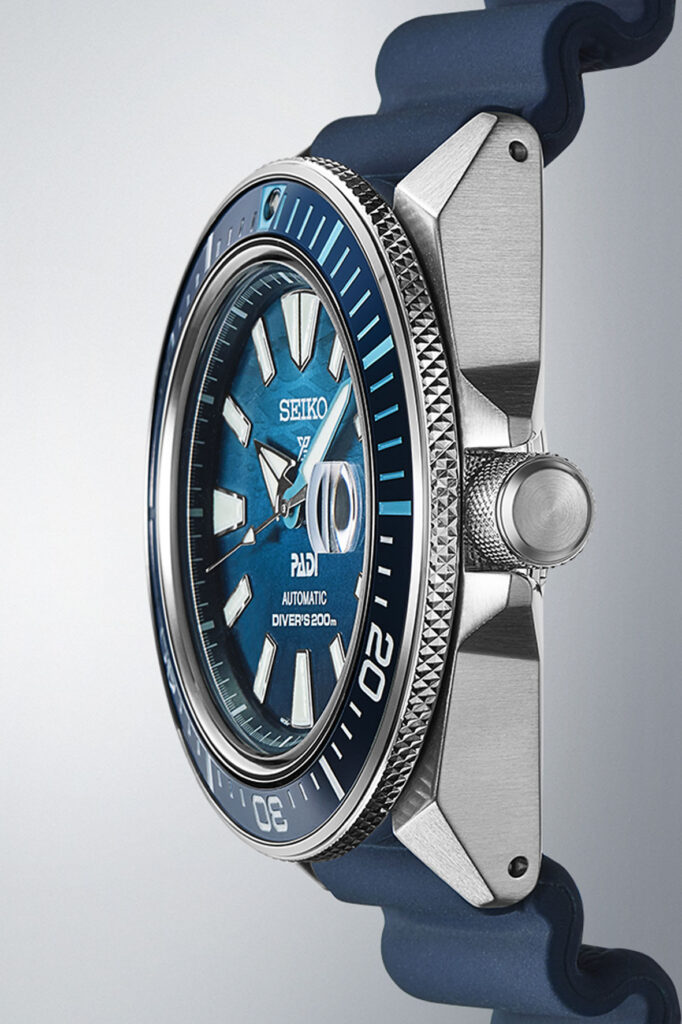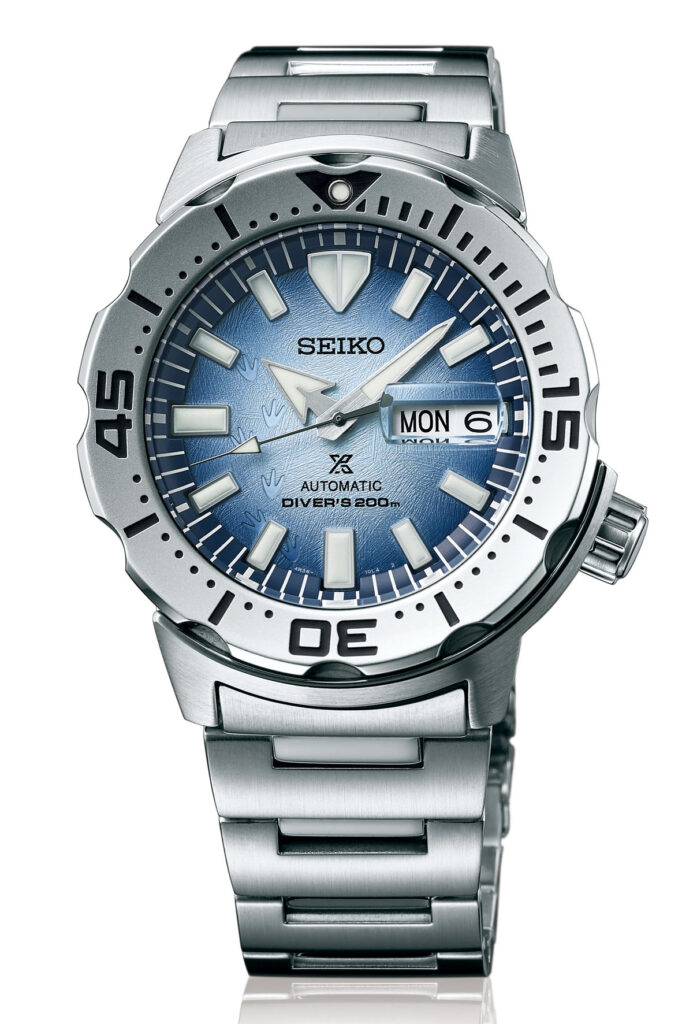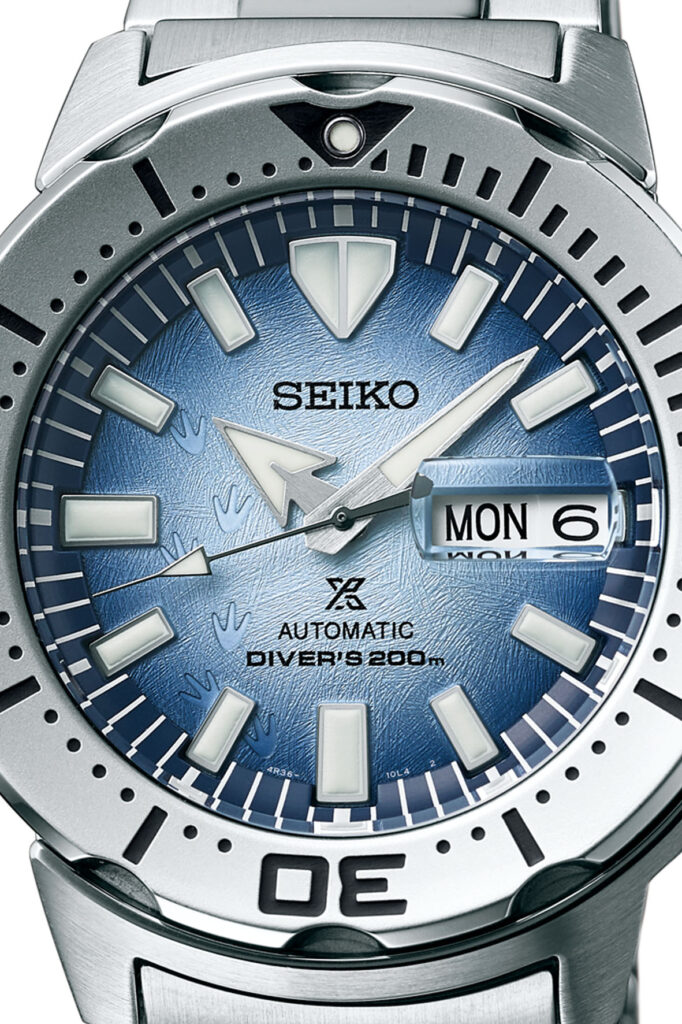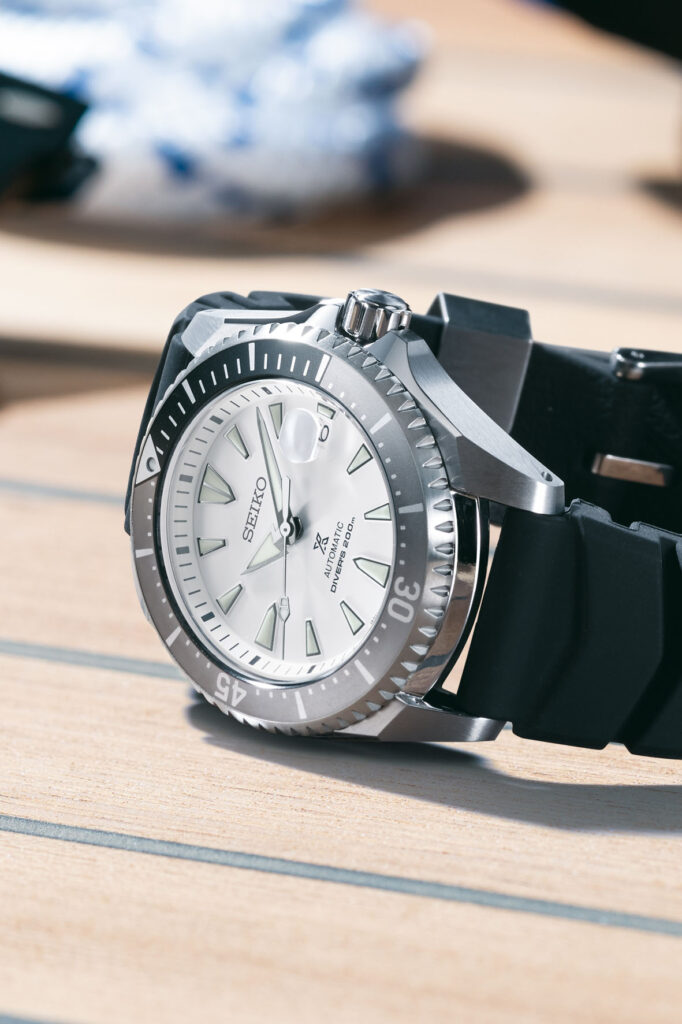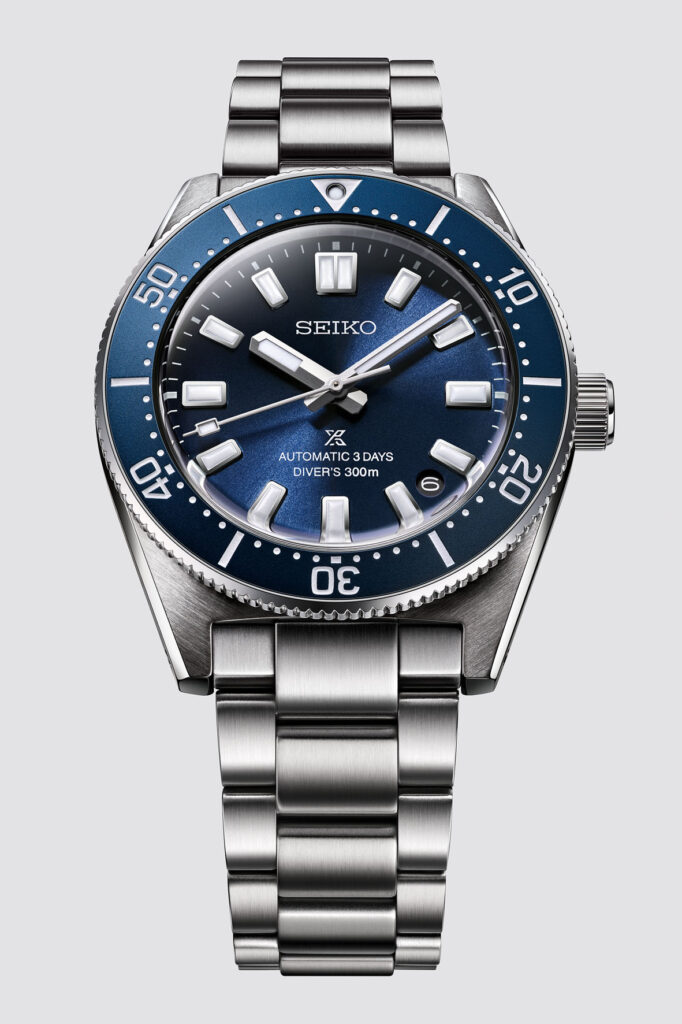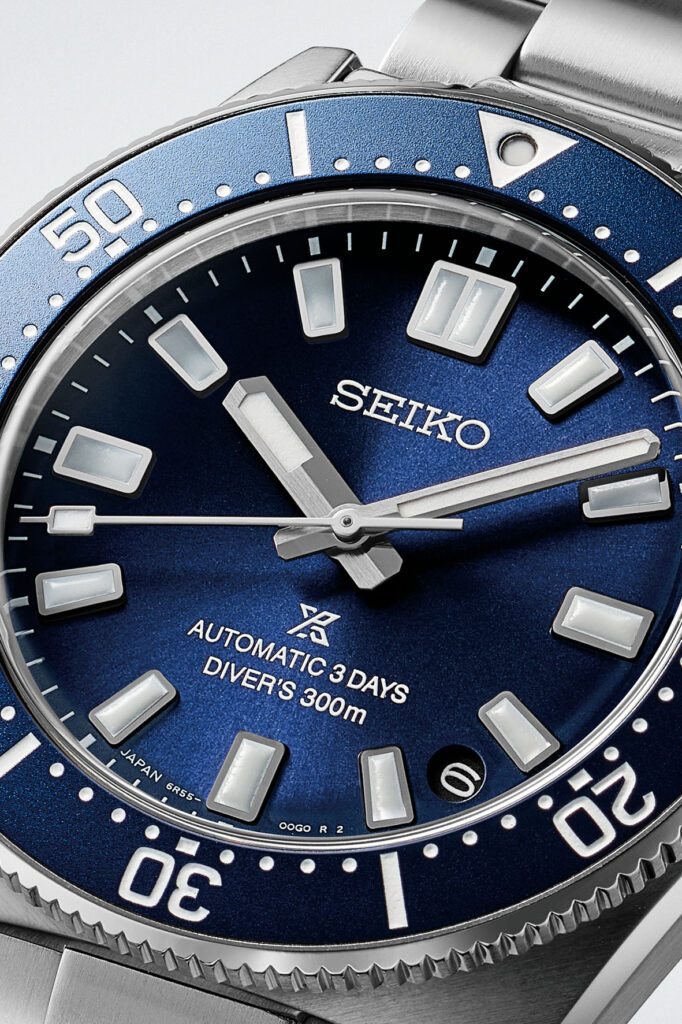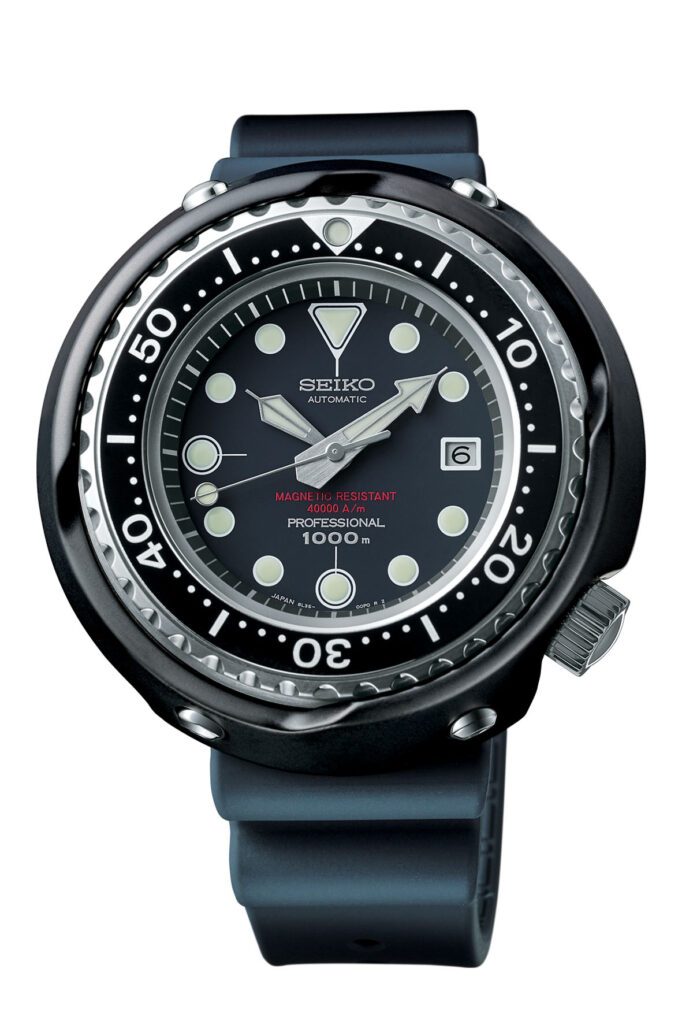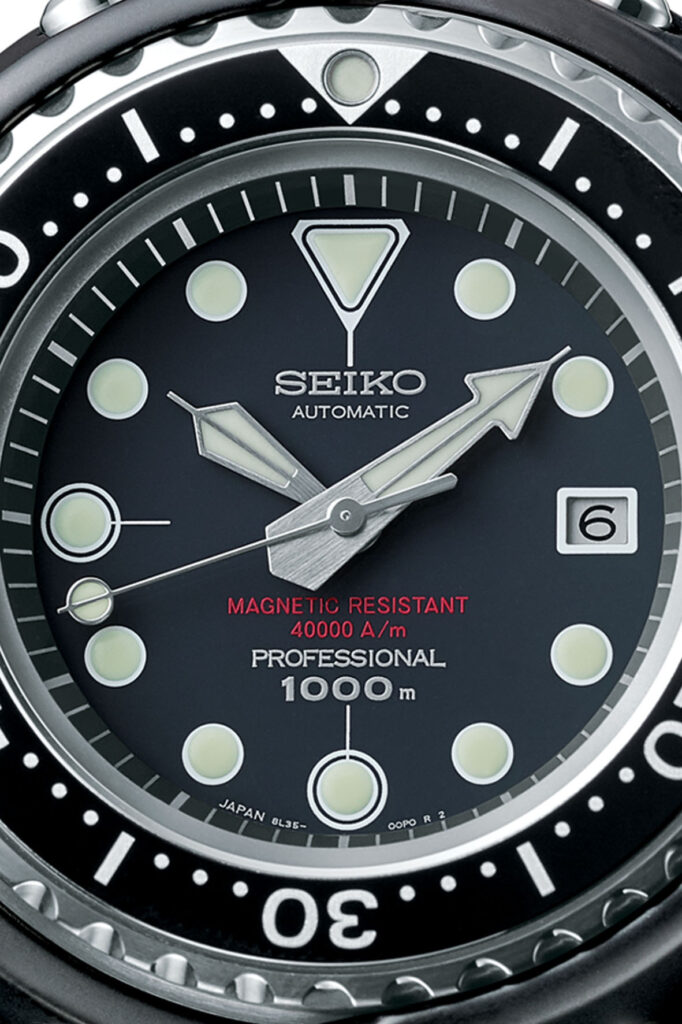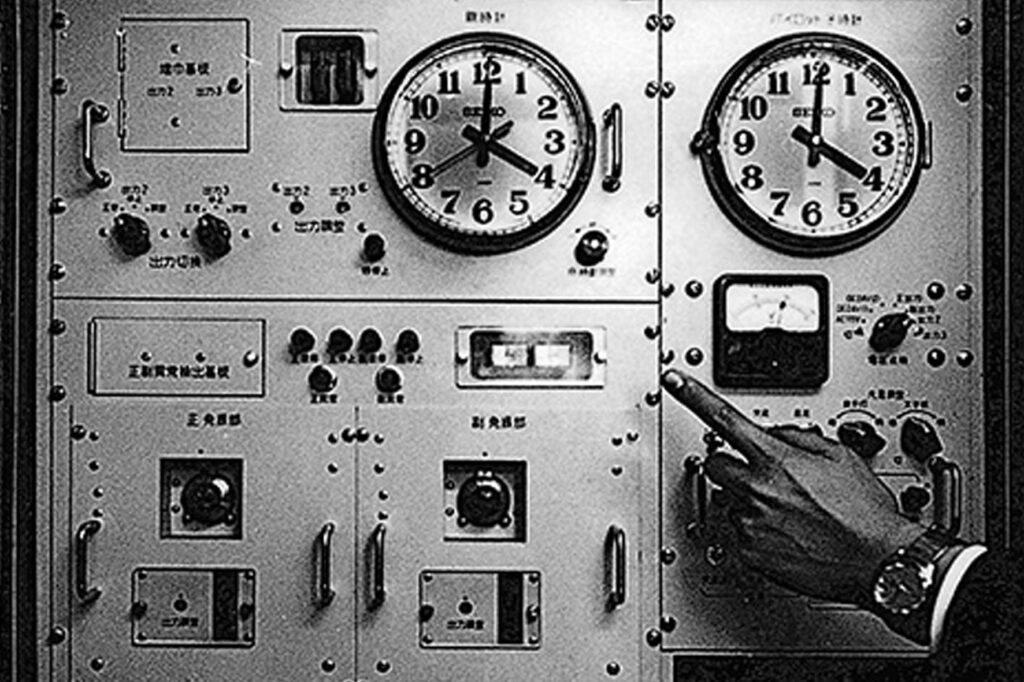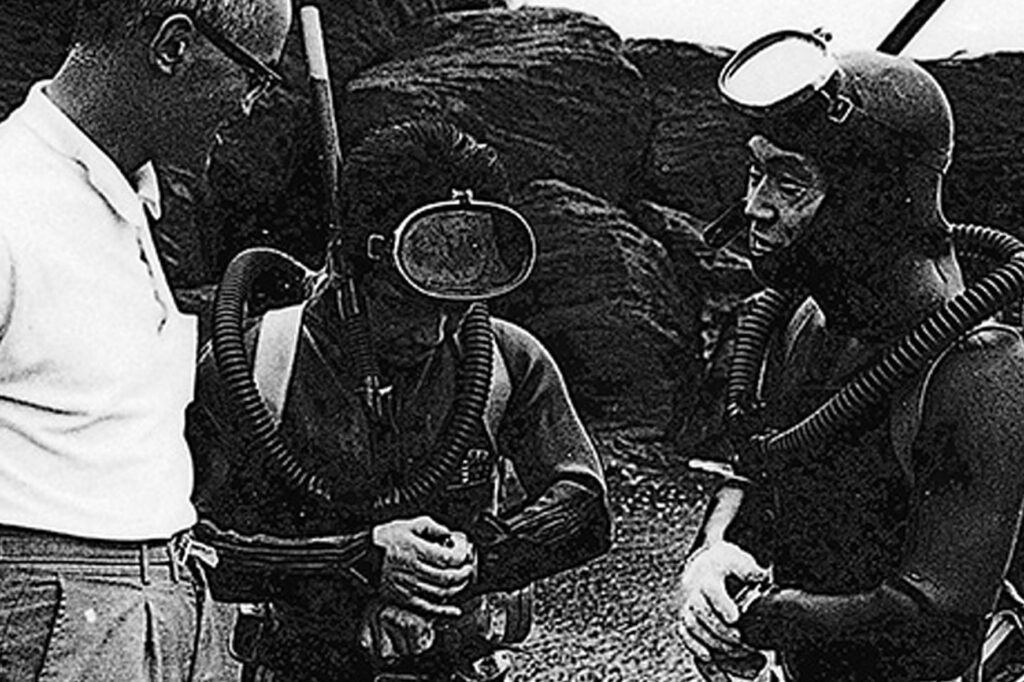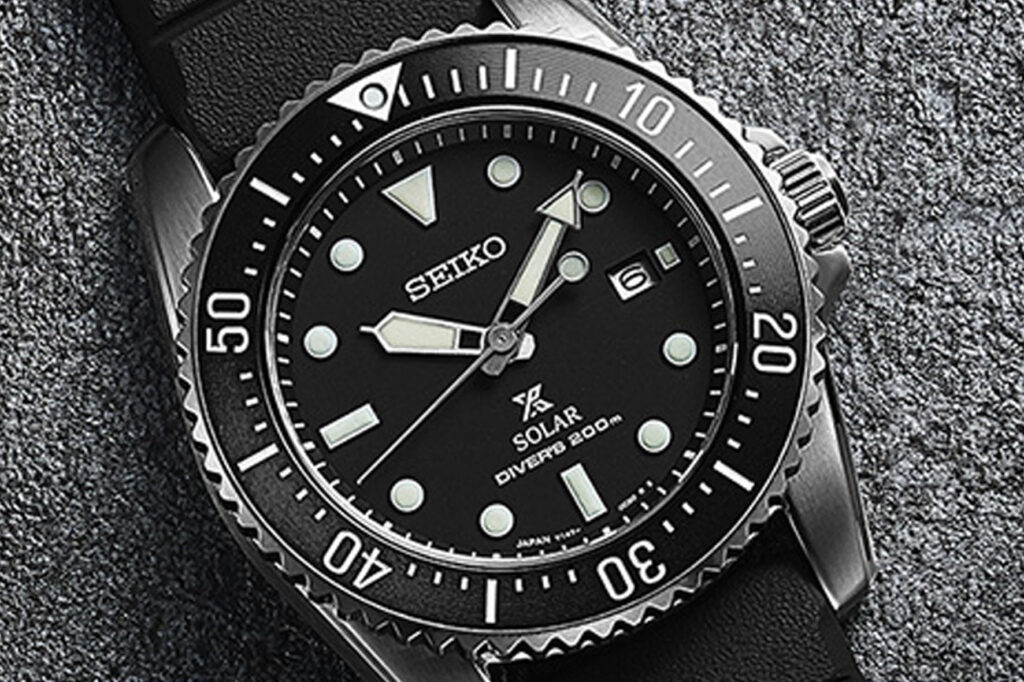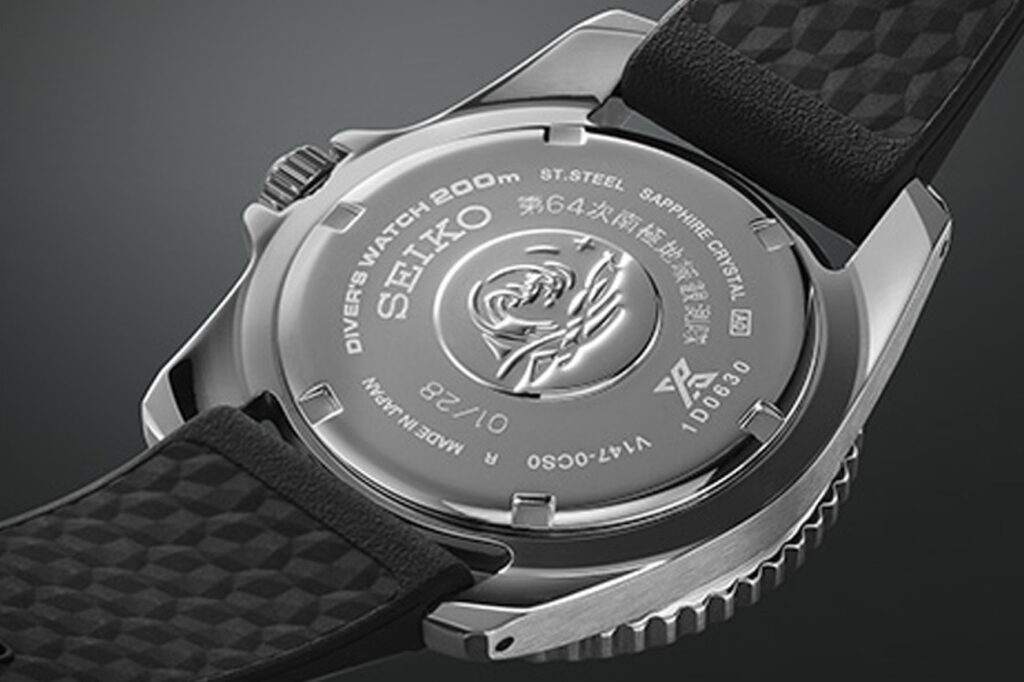Seiko’s divers: a story about passion, performance and the sea
17 July 2024The bond between Seiko and diving is so strong that it has left a deep mark on the history of diving watches. It is a relationship so close that only very few other brands can boast of, and which has been nurtured over the decades by references that have gone down in history as much for their design as for the nicknames they inspired, the fruit of the imagination of Seiko’s many enthusiasts. A design that in the beginning was so clean and straightforward that, if you ask someone unfamiliar with diver’s watches to draw you one, they will probably sketch – with an incredible resemblance – the 62MAS: Seiko’s first diver.
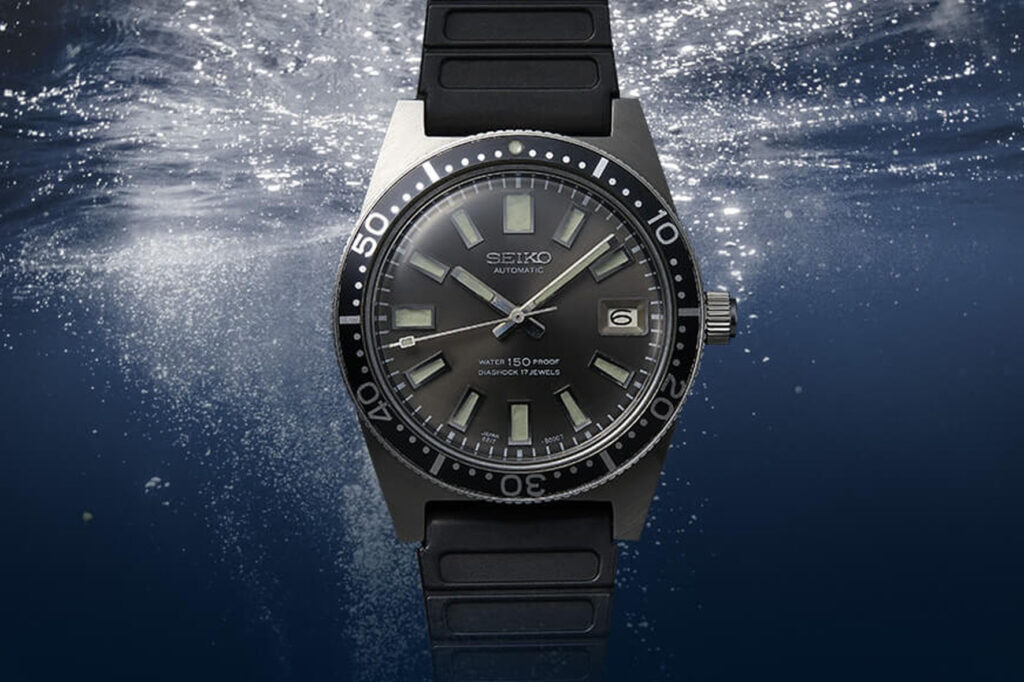
How important that diver was to the development of diving watches, not just to the Japanese brand, is now history. Much of what came after was simply a variation on the theme of that timepiece, whose official name was 62 Seikomatic Calendar Diver’s Watch. The name 62MAS is probably related to the first two digits of the reference number (6217-8000) and the term ‘autoMAtic Selfdater’.
TARO TANAKA AND THE ‘GRAMMAR OF DESIGN’
The 62MAS was commissioned to Seiko by the Japanese Antarctic Research Expedition for its eighth expedition to Antarctica. The request came at a time when the brand was busy developing electronic measuring devices for the 1964 Tokyo Olympics, and the task was entrusted to Seiko’s head of development at the time, Taro Tanaka.
Freshly graduated with a degree in design, he joined the company in 1959 and was the first specially trained designer to be hired by the brand. Tanaka distinguished himself by a holistic approach to the watch, with an idea of design that should go beyond the dials and involve the entire creative process. The aim was to make Seiko’s watches stand out, and make them instantly recognisable from those of its mainly Swiss competitors.
Taking inspiration from the art of gem-cutting, Tanaka developed a watch design philosophy and, in 1962, created the so-called Grammar of Design, based on a structural aesthetic consisting of clear, sharp reliefs on which certain surfaces forming the case and dial are arranged. This grammar is based on four basic principles: the surfaces and angles of the dial, case, indexes and hands must be flat and geometrically perfect in order to optimally reflect the light; bezels must be curved, faceted, two-dimensional; cases and dials must be mirror-finished, paving the way for the Zaratsu method; no generically round cases are to be used, but uniqueness is sought for each case.
A holistic approach, in fact, in which the watch’s material takes shape as it is moulded and comes to life through the interaction of light and shadows.
IN THE BEGINNING WAS THE 62MAS
Given this revolutionary approach to design, the original design of the 62MAS was completed in a month and, given the very tight schedule, went into production with the case unpolished. That reference, the 6217-8000, was only produced from April to May 1965. It is known among collectors as the ‘Small Crown’ because of the small size of the winding crown and is, needless to say, the most sought-after. The later 8001 series would equip the eighth Japanese Antarctic expedition in 1966; its winding crown was larger and much easier to handle by expedition members who regularly wore gloves. Speaking of which, it is interesting to note that the 62MAS remained for decades the only professional-level Seiko diver’s watch on which the crown was positioned at 3 o’clock.
In any case, the model established, or reinforced, a number of elements that would become cornerstones of diver’s watches design. The original had a 37 mm tonneau case with squared lugs and was water-resistant to 150 metres. It featured a bidirectional bezel for calculating dive times, lugs with through holes, and easily readable luminescent hour markers and hands. It also had a decidedly large and unprotected crown, and was powered by an automatic calibre 6217 movement with 18,000 vibrations per hour.
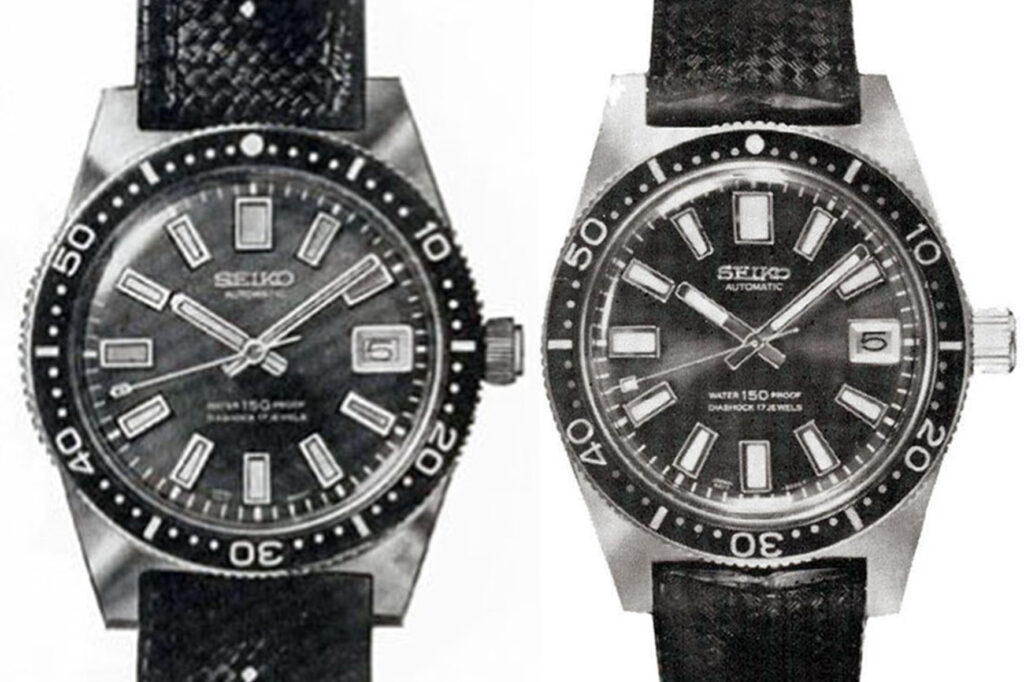
Although large for a diver’s watch, the design of the 62MAS would become an inspiration for other divers of its generation. Testifying to the timelessness of these shapes, last year Seiko presented the Ref. SJE093J1, a limited edition of 1,965 pieces. Faithful to the original in every detail, it has the modern traits of contemporary Seiko watchmaking: sapphire crystal box, 200-metre water resistance, Lumibrite-filled hands and hour markers to improve legibility in low light.
SEIKO AND THE BIRTH OF THE TUNA
With the introduction and success of the 62MAS, Seiko continued to research and develop greater water resistance for its divers, culminating in the first professional 300-metre model, the 6215-8000, launched in 1967. This model introduced Hardlex glass and a screw-down crown into the range, to ensure greater water resistance, and divided Seiko’s diver production into two levels: the 150-metre watches for amateur divers and the higher-level professional models. The history of the latter changed thanks to a letter.
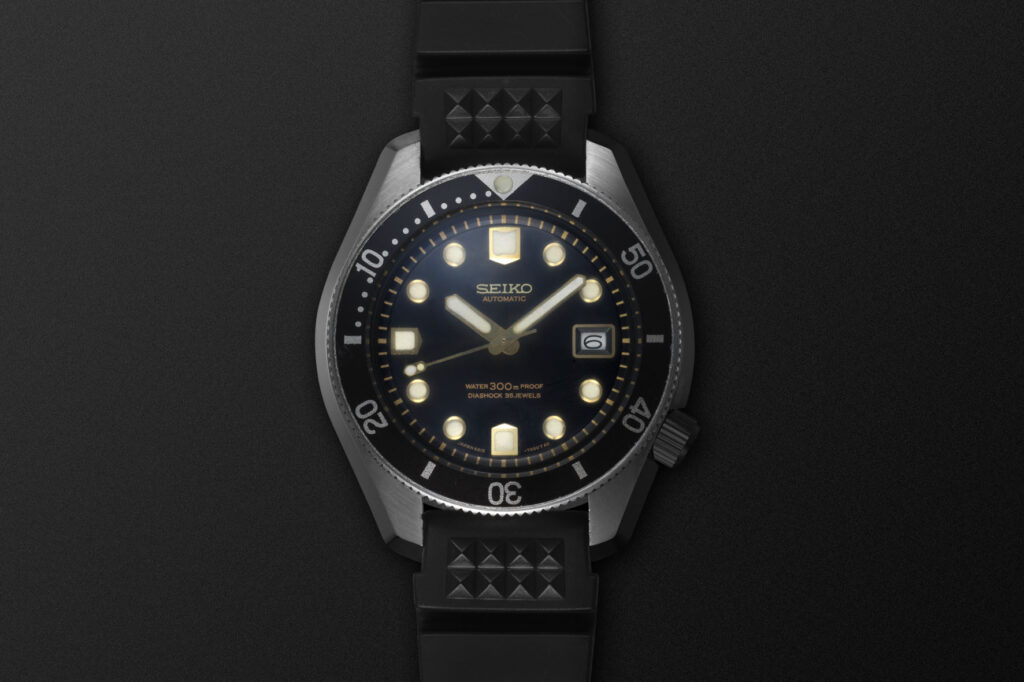
In 1969 or 1970, Seiko received a letter from Hiromi Oshima, a commercial diver from Kure, Hiroshima Prefecture, regarding some problems he had encountered using the 300-metre divers. He was a saturation diver and had found that in helium-rich environments, this gas, creeping into the watch, blew out the crystal during decompression. In addition, he had found that watches were vulnerable to damage caused by impacts against rocks underwater.
Not long after receiving the letter, representatives from Seiko visited Oshima’s workplace, an oil rig. Tatsuro Akabane, from the Suwa factory’s design team, and Taro Tanaka (still in charge of Seiko’s development) spoke with Oshima and his colleagues, going so far as to lower themselves with an underwater bell to experience the conditions in that environment for themselves. Shortly afterwards, Tanaka and Ikuo Tokunaga, an engineer at Seiko, set up a research team to tackle the problem. The result of their work, which lasted five years, was the issuing of twenty new patents and the creation of the Professional Diver’s 600m 6159-7010.
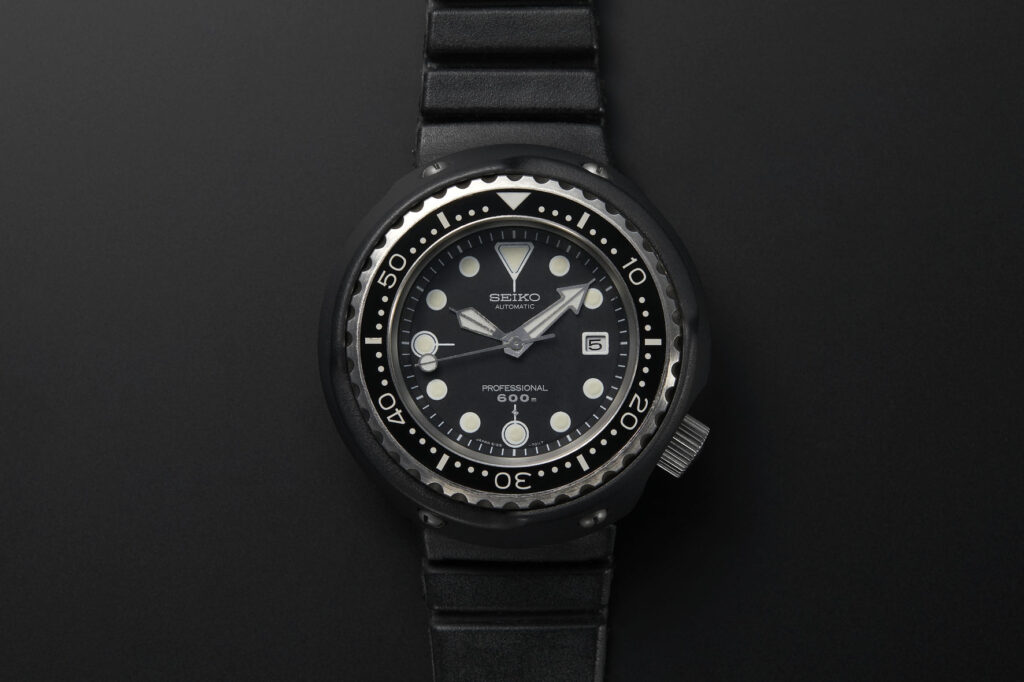
Thus was born Seiko’s first diver’s watch waterproof to 600 metres and the world’s first titanium diver’s watch. It had a special L-shaped gasket designed to prevent helium from entering the case under saturated diving conditions, thus avoiding the need for a special helium escape valve as on other brands’ divers. The one-piece case, which resembled a tuna can, would give rise to its nickname, Tuna, which endures to this day. Along with it, the watch introduced elements such as the L-shaped gasket, the accordion strap, arrow-shaped hands and a higher-performance Lumibrite.
SEIKO TURTLE SPB151J1 (200M)
We could go on with other anecdotes and historical references that have strengthened the bond between Seiko and the sea over the decades, but without the 62MAS and without the first Tuna, there would hardly have been many of the watches we know now. That’s why we thought we’d briefly recall some of the most significant references of Seiko’s modern diver watches – now included in the Prospex collection –, going in strict order of water resistance. And starting with one of the most beautiful contemporary Turtles.
The Turtle SPB151J1 is a re-edition of the model known to enthusiasts as Apocalypse Now, or Captain Willard. In fact, it has the cushion-shaped case of the legendary 6105-811X made famous by Martin Sheen in his role as Captain Willard in Francis Ford Coppola’s film. The watch was also used by Japanese explorer Naomi Uemura on her polar missions. The case measures 42.7 mm and is slimmer than the original model, thanks to the Seiko automatic calibre 6R35 with 70 hours of power reserve that animates it. Sapphire crystal and steel bracelet for this version with black dial and black bezel.
SEIKO KING SUMO SPB323J1 (200M)
Another nickname that has now entered common usage to refer to certain Seiko divers is Sumo. The reason for the nickname is quickly explained, just take a look at the large, solid case, which immediately conveys a feeling of robustness, easily associated with that of a sumo wrestler. Moreover, the shape of the index finger on the bezel at 12 o’clock is reminiscent of the hairstyle that characterises those particular athletes.
The reference SPB323J1 features a 45 mm diameter x 12.9 mm thick steel case, Super-Hard coating, sapphire crystal with anti-reflective coating on the inside, unidirectional steel bezel with polished black ceramic insert, 60-minute scale, screw-down crown and case back. The dial is grey- shaded with a wave-shaped micro-motif, applied hour markers and Lumibrite-filled hands. The movement is a Seiko automatic calibre 6R35, with a 70-hour power reserve.
SEIKO SAMURAI PADI SRPJ93K1 (200M)
Say Japan and you immediately think of the samurai, their swords, armours, traditions. Associating a Seiko diver with this world is a natural thing to do, especially if it has certain characteristics such as a case with a sharp, decisive shape, as if cut with a lethal katana. In addition to this, these watches’ overall aesthetics, clean and essential, evoke the samurai’s sober spirit and philosophy.
The SRPJ93K1 PADI Special Edition ‘The Great Blue’ professional diver is equipped with calibre 4R35, which offers a 41-hour power reserve. While its structure is essential – a stainless steel King Samurai case with a unidirectional rotating bezel and silicon strap – what stands out is the collaboration which characterises it: the one with the PADI – the ‘Professional Association Of Diving Instructors’, which we will discuss later – clearly visible from the association’s logo at 6 o’clock and by the inscription on the outer side of the strap. The dial motif reflects the surface of the ocean as seen from underwater, with the sunlight falling and the water surface in motion.
SEIKO MONSTER SRPG57K1 “SAVE THE OCEAN” (200M)
Besides samurai, another aspect that characterises Japanese culture is that of monsters, which are not just Godzilla. That’s why the nickname Monster could not miss, given to those particular Seiko divers whose deep grooves in the bezel call to mind the fangs of a ferocious monster, just as the large and conspicuous indices make the dial design resemble the gaping mouth of a beast.
The reference SRPG57K1 is a special ‘Save the Ocean’ edition (we will also come back to this later) – inspired by the initiative aimed at protecting penguins in Antarctica, and whose presence is suggested by the paw prints decorating the dial. This 42.4 mm version is mounted on a steel bracelet and is designed to withstand the extreme water sports conditions. The polar blue dial features large Lumibrite indices that allow the time to be read optimally during every exploration and in all light conditions.
SEIKO SHOGUN SPB191J1 (200M)
Enthusiasts also have reserved for certain collections another nickname referring to the samurai world: Shogun. The pointed shape of the indices and that of the bezel, as well as the strong, metallised aesthetics of these watches are reminiscent of the armours of the shoguns – the ancient Japanese army’s highest ranking generals. However, perhaps the epithet was suggested by the overall impression of strength and boldness that these watches convey.
The Seiko Shogun SPB191J1 has a large 43.5 mm case in titanium with super-hard-coating and a rotating bezel in titanium as well. The crystal is made of sapphire with anti-reflective coating, and the strap is in black silicone. The white dial is beautiful, contrasting with the colour of the bezel and strap. It is also driven by the automatic calibre 6R35 with 70 hours of power reserve. Interestingly, the Shogun was launched in 2008 initially only for the Japanese market and it was later distributed to the rest of the world.
SEIKO DIVER SPB451J1 (300M)
With the reference SPB451J1 we take a 100-metre leap further, as we’ll be talking about a Seiko diver that is water-resistant to 300 metres, or 30 bar. The watch, featuring a very attractive blue dial, is powered by one of the brand’s latest in-house developed movements, the calibre 6R55, with a 72-hour power reserve. This is the first time that this movement has been included in the Prospex collection. The date display has been moved from 3 o’clock to 4:30 for a more symmetrical design, and to leave more space for the Lumibrite.
The steel case has a restrained diameter of 40 mm and a thickness of 13 to ensure the reliability, safety and ease of use required of a Seiko diver’s watch. The bezel is made of steel with an aluminium insert, with laser-etched hour markers and Arabic numerals to prevent wear and tear from long periods of use. Thanks to a new bracelet with shorter links and a smaller buckle, the watch easily fits wrists of different sizes.
SEIKO TUNA SLA041J1 (1.000M)
Here is Seiko’s most extreme diver, with water resistance of 1,000 metres or 100 bar. Launched in 2020 as a limited edition to celebrate the 55th anniversary of the Japanese brand’s entry into the diver’s watch segment, this timepiece is, in a way, also a sort of commemorative edition of Seiko’s first saturation diver, the 1975 Tuna we wrote about above.
As is usual for Seiko’s saturation diver watches, there is no helium outlet valve, but instead an L-shaped gasket and an ultra-strong glass and case have been chosen to solve the problem. The case is large: 52.4 mm in diameter by 17.2 mm thick. However, it is designed to look massive, super strong and ultra robust for its intended use. The watch has a magnetic resistance of 40,000 A/m (about 500 Gauss) and a dial made of a single piece of steel. The dial’s layout is typical for a diver’s watch, very simple and easy to read, with very large indexes and a polished metal frame filled with a huge amount of Lumibrite. The calibre is the 8L35, mechanically identical to the 9S55 but less decorated (the back of the watch is closed).
SEIKO’S COMMITMENT TO PROTECTING THE OCEANS AND THE ENVIRONMENT
Such a strong connection with the sea and the world of diving could not fail to include actions in defence of what is one of the world’s most fragile and endangered ecosystems: the oceans. Since 2016, Seiko Prospex has been supporting various activities aimed at preserving marine flora and fauna through its ‘Save the Ocean’ programme, which includes the partnership with the PADI, the world’s largest diving network and a leader in diving training. Thanks to this partnership, numerous Seiko diver watches have the PADI logo on their dials.
Founded in 1966, the PADI has a global network of more than 6,600 diving centres and locations, more than 128,000 professional members, and issues more than 1 million certifications annually. As part of the Save the Ocean initiative, Seiko collaborates with the PADI with the goal of reducing marine debris thanks to the help of divers around the world. It is estimated that more than 250 million tonnes of plastic will end up in our oceans by 2025, causing an estimated $13 billion in environmental damage annually.
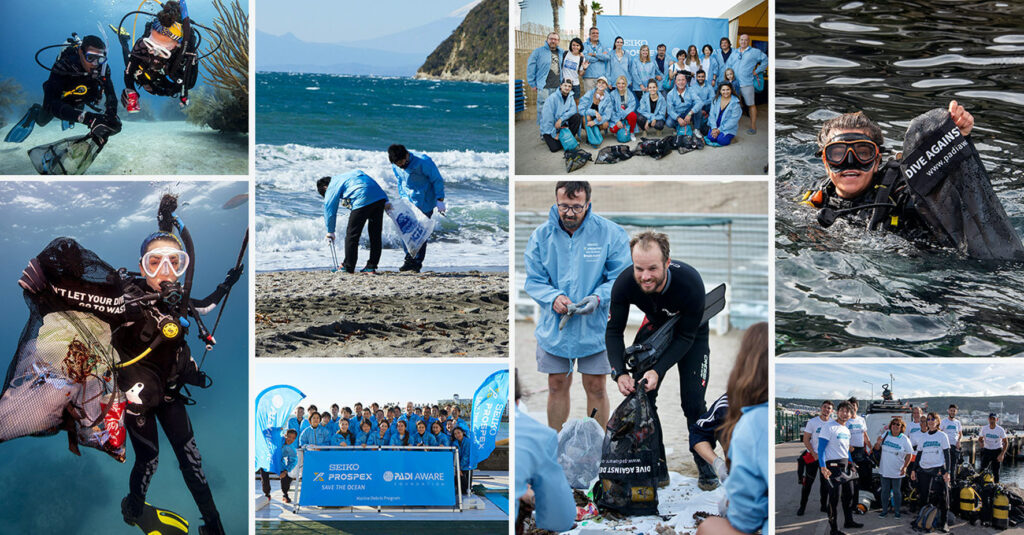
At the heart of the PADI AWARE Foundation Marine Debris programme is the clean-up initiative known as Dive Against Debris. By getting involved, divers can take direct action for the ocean by collecting critical data from each dive that can be used by marine researchers and for conservation initiatives. By creating references in collaboration with the PADI, Seiko is promoting the partnership and turning what has been a nearly 60-year history of passion into concrete action.
Furthermore, in line with Prospex’s mission to protect the oceans for future generations, Seiko’s commitment to safeguarding marine resources is not limited to environmental conservation. Since 2015, the brand has been supporting, among others, the Fournoi Underwater Survey and Excavation Project in Greece, which aims to preserve cultural heritage by surveying and excavating sunken ships from the 4th century off the Greek island of Fournoi. Through this initiative, the project team wants to gather information on the Mediterranean maritime trading system of that era.
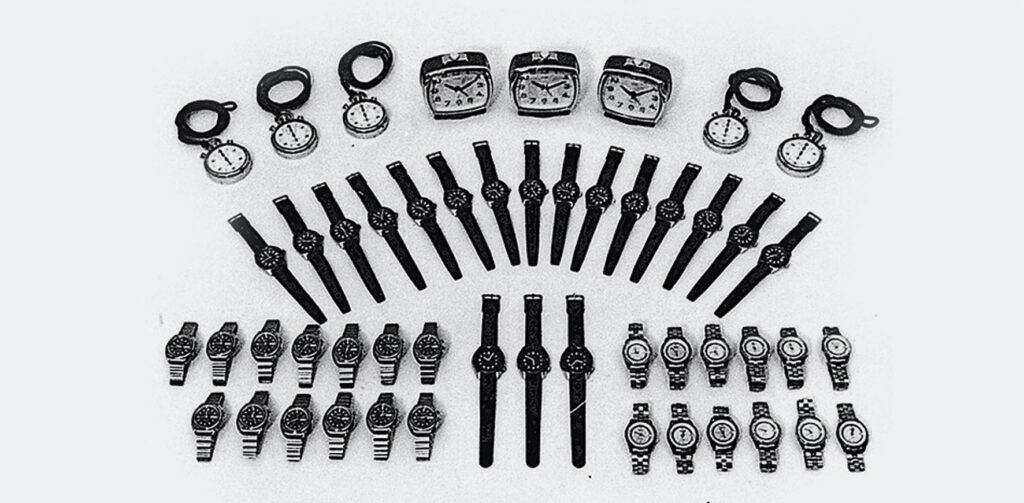
But Seiko’s commitment and the legacy of Seiko Prospex go beyond the preservation of the oceans. Indeed, the brand’s desire to contribute to environmental research and the protection of natural resources has taken it to the ends of the earth, literally. In the 1960s, the Japanese Antarctic Research Expeditions chose to use Seiko divers and timing equipment. In 2022, Seiko renewed this tradition by donating Prospex diver’s watches to members of the 64rd Japanese Antarctic Research Expedition who had used them on this mission to explore environmental changes in Antarctica.
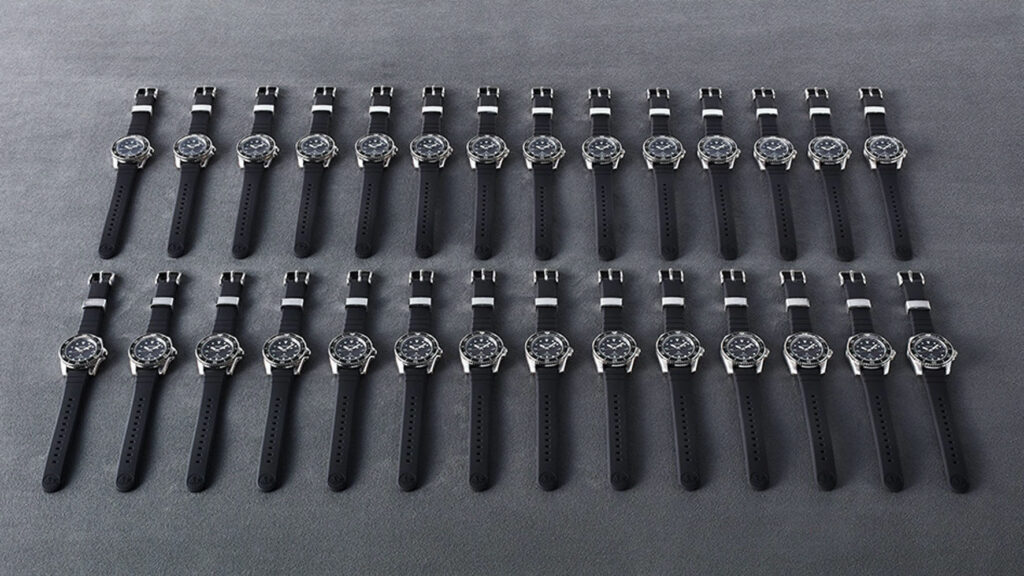
Seiko’s sustainability efforts also extend to reducing carbon emissions and adopting sustainable practices in manufacturing processes. Seiko offices around the world are involved in a range of community support activities, from planting trees in India to cleaning beaches in the United States, the Netherlands, Italy and Germany. In Australia, the company runs programmes focused on biodiversity, while in Thailand, Seiko works to conserve the ocean and mangrove forests.
By Davide Passoni

